AST 105 HW #3 Week of September 7 , 2015
advertisement
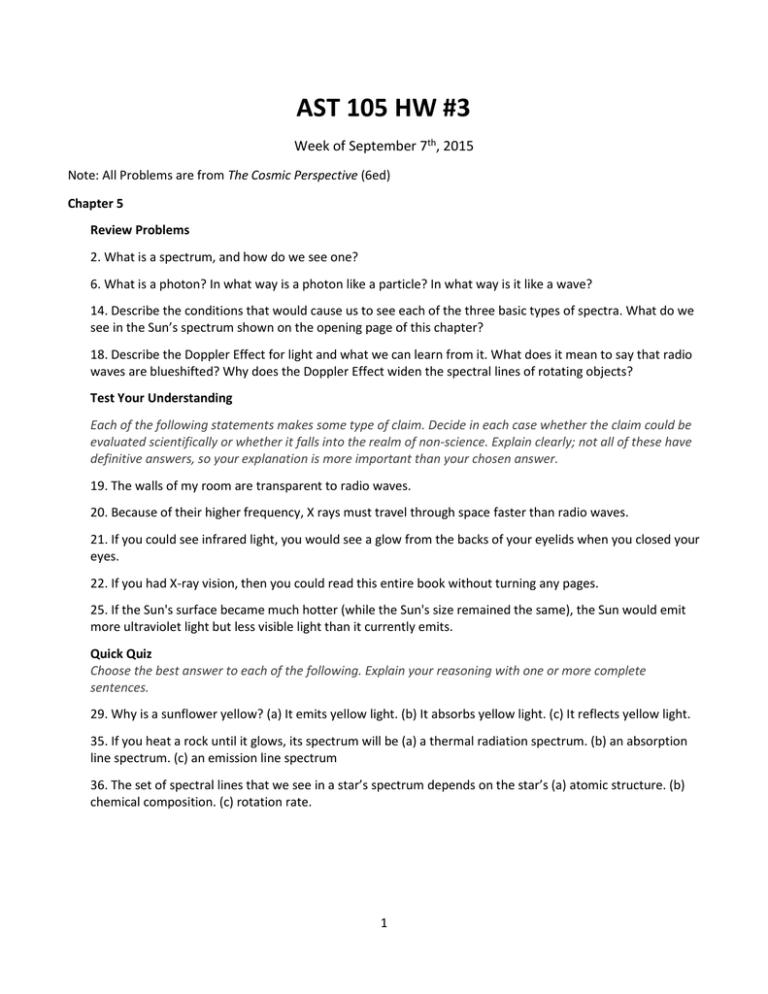
AST 105 HW #3 Week of September 7th, 2015 Note: All Problems are from The Cosmic Perspective (6ed) Chapter 5 Review Problems 2. What is a spectrum, and how do we see one? 6. What is a photon? In what way is a photon like a particle? In what way is it like a wave? 14. Describe the conditions that would cause us to see each of the three basic types of spectra. What do we see in the Sun’s spectrum shown on the opening page of this chapter? 18. Describe the Doppler Effect for light and what we can learn from it. What does it mean to say that radio waves are blueshifted? Why does the Doppler Effect widen the spectral lines of rotating objects? Test Your Understanding Each of the following statements makes some type of claim. Decide in each case whether the claim could be evaluated scientifically or whether it falls into the realm of non-science. Explain clearly; not all of these have definitive answers, so your explanation is more important than your chosen answer. 19. The walls of my room are transparent to radio waves. 20. Because of their higher frequency, X rays must travel through space faster than radio waves. 21. If you could see infrared light, you would see a glow from the backs of your eyelids when you closed your eyes. 22. If you had X-ray vision, then you could read this entire book without turning any pages. 25. If the Sun's surface became much hotter (while the Sun's size remained the same), the Sun would emit more ultraviolet light but less visible light than it currently emits. Quick Quiz Choose the best answer to each of the following. Explain your reasoning with one or more complete sentences. 29. Why is a sunflower yellow? (a) It emits yellow light. (b) It absorbs yellow light. (c) It reflects yellow light. 35. If you heat a rock until it glows, its spectrum will be (a) a thermal radiation spectrum. (b) an absorption line spectrum. (c) an emission line spectrum 36. The set of spectral lines that we see in a star’s spectrum depends on the star’s (a) atomic structure. (b) chemical composition. (c) rotation rate. 1 Short-Answer/Essay Questions 44. Energy Level Transitions. The following labeled transitions represent an electron moving between energy levels in hydrogen. Answer each of the following questions and explain your answers. a. Which transition could represent an atom that absorbs a photon with 10.2 eV of energy? b. Which transition could represent an atom that emits a photon with 10.2 eV of energy? c. Which transition represents an electron that is breaking free of the atom? d. Which transition, as shown, is not possible? e. Would transition A represent emission or absorption of light? How would the wavelength of the emitted or absorbed photon compare to that of the photon involved in transition C? Explain. 2



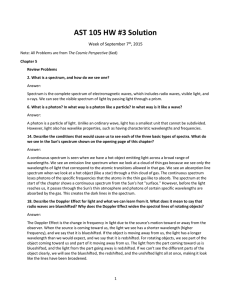
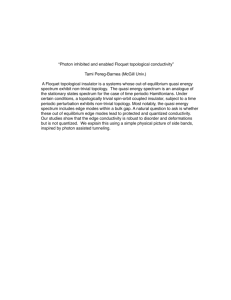


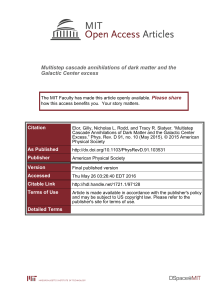
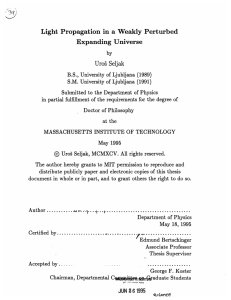
![Measurement of B (BX[subscript s]), the BX[subscript s]](http://s2.studylib.net/store/data/012107903_1-c89caa93418ecb2c973ca22a36239518-300x300.png)